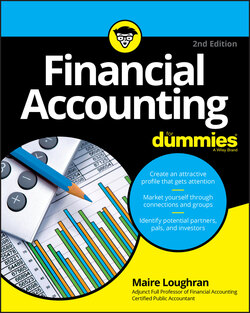Читать книгу Financial Accounting For Dummies - Maire Loughran - Страница 41
Assets
ОглавлениеAssets are resources a company owns. Examples of assets are cash, accounts receivable, inventory, fixed assets, prepaid expenses, and other assets. I fully discuss each of these assets in other chapters in this book (starting with Chapter 7), but here’s a brief description of each to get you started:
Cash: Cash includes accounts such as the company’s operating checking account, which the business uses to receive customer payments and pay business expenses, and imprest accounts, in which the company maintains a fixed amount of cash, such as petty cash. Petty cash refers to any bills and coins the company keeps handy for insignificant daily expenses. For example, the business runs out of toilet paper in the staff bathroom and sends an employee to the grocery store down the block to buy enough to last until the regular shipment arrives.
Accounts receivable: This account shows all money customers owe to a business for completed sales transactions. For example, Business A sells merchandise to Business B with the agreement that B pays for the merchandise within 30 business days. Business A includes the amount of the transaction in its accounts receivable.
Inventory: For a merchandiser — a retail business that sells to the general public, like your neighborhood grocery store — any goods available for sale are included in its inventory. For a manufacturing company — a business that makes the items merchandisers sell — inventory also includes the raw materials used to make those items. See both Chapters 7 and 13 for more information about inventory.
Fixed assets: The company’s property, plant, and equipment are all fixed assets. This category includes long-lived tangible assets, such as the company-owned car, land, buildings, office equipment, and computers. See Chapters 7 and 12 for more information about fixed assets.
Prepaid expenses: Prepaids are expenses that the business pays for in advance, such as rent, insurance, office supplies, postage, travel expense, or advances to employees.
Other assets: Any other resources owned by the company go into this catch-all category. Security deposits are a good example of other assets. Say the company rents an office building, and as part of the lease it pays a $1,000 security deposit. That $1,000 deposit appears in the “other assets” section of the balance sheet until the property owner reimburses the business at the end of the lease.
